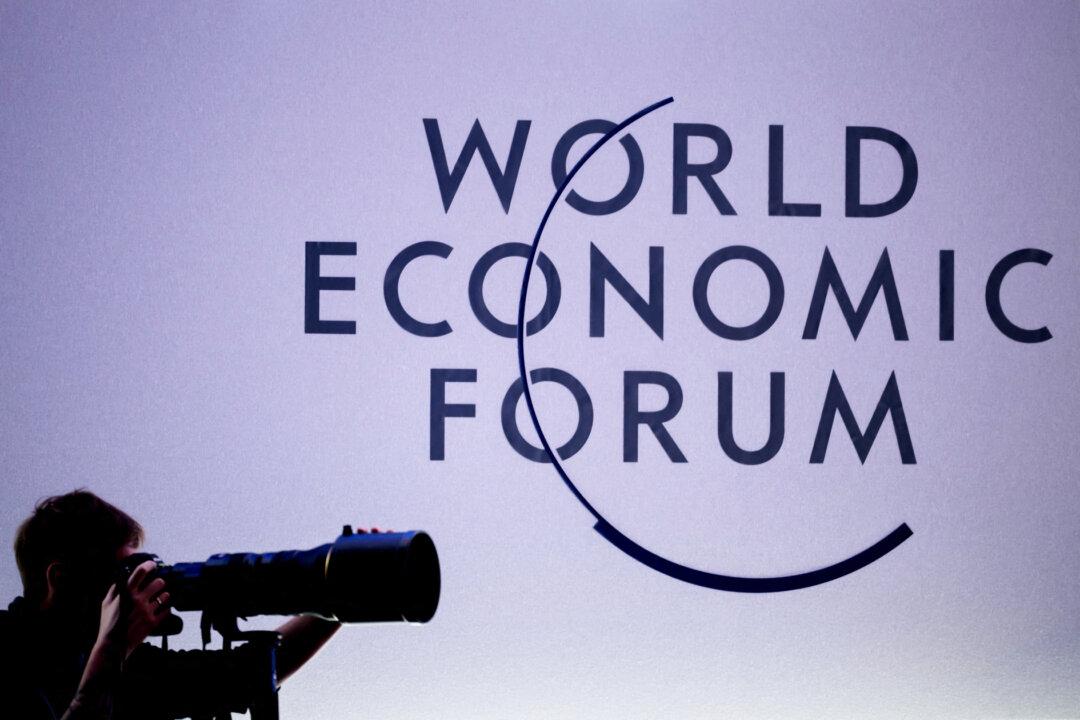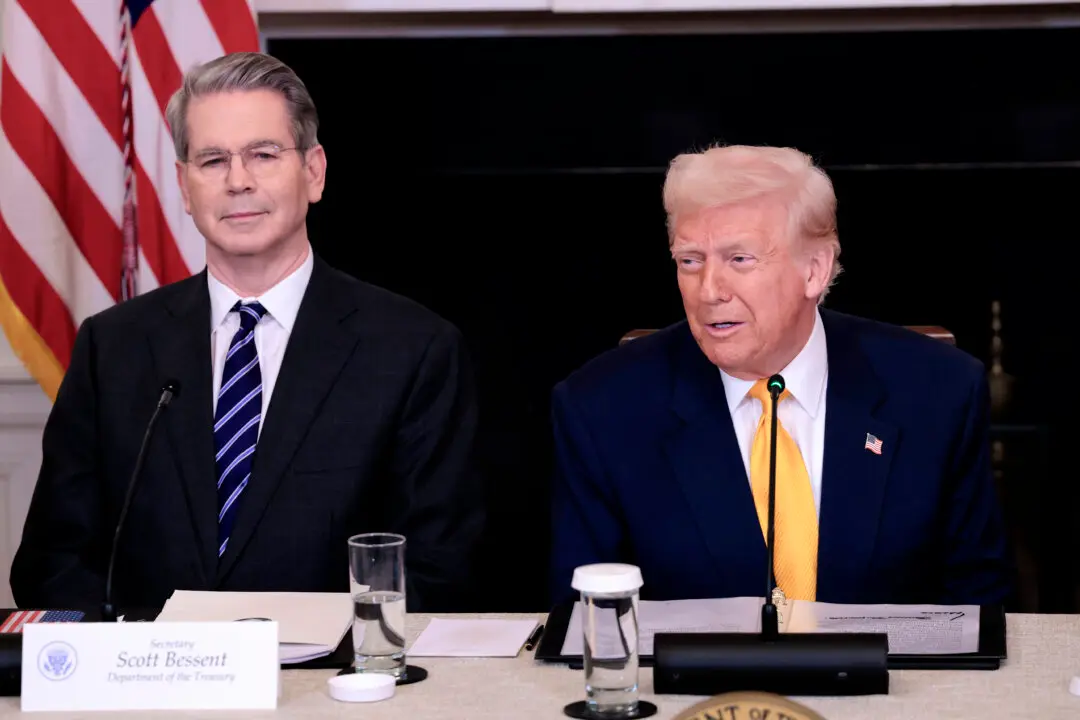At the World Economic Forum in Davos, Switzerland, many European leaders exhibited their “Trump derangement syndrome” (TDS), fearing a second term by former President Donald Trump seemingly more than a series of wars around the world now going on, or global warming fears, or global recessions. With Florida Governor Ron DeSantis dropping out of the race and endorsing Donald Trump just before the New Hampshire primary, it now appears that the former president will lock up the GOP nomination faster than any non-incumbent has ever done.
Still, we should be prepared for some twists and turns in the presidential race throughout this year. The bottom line is that the most positive candidate is typically elected, and that positive energy helps to boost both consumer and investor confidence. Furthermore, a series of key interest-rate cuts by the Federal Reserve are expected to send the stock market higher—right up to election day in November—so we have a lot to look forward to.
Another positive for investors is that earnings comparisons remain favorable for the next three quarters, so, again, the stock market is expected to rally right up to election day. The typical historical pattern would be a slow first quarter followed by a strong finish. The big question is, when will the Fed’s rate cuts will start?
Now that the New Hampshire primary is over, the presidential election is looking like a rematch between Joe Biden and Donald Trump, with Robert F. Kennedy, Jr. running as an Independent, likely taking votes away from both Messrs. Biden and Trump. Post–COVID-19, the world has been shifting right. The latest example is in New Zealand, where the Conservative Party won a majority of seats. New Zealand was one of the most locked-down countries during COVID-19 and voters clearly do not want those authoritarian lockdowns to reoccur. In America, this worldwide rightward shift would seem to bode poorly for President Biden being reelected.
Unless President Biden can turn around his unpopular energy policies and his perceived aging challenges, a new president will likely be elected in November. In addition, the Biden administration’s on-shoring efforts have clearly failed, since the big semiconductor plant in Arizona is not scheduled to open until after the election, in 2025, plus the Big Three automakers canceled most of their battery plants with their Chinese and South Korean partners. In addition, the United states has been in a manufacturing recession for 14 months now.
U.S. GDP has kept rising because services (which account for about 70 percent of GDP) have kept expanding, in the wake of the announcement that December retail sales rose 0.6 percent, the strongest rise in three months. Treasury bond yields meandered higher, so some economists do not expect Fed rate cuts to begin until June. Obviously, the faster the Fed cuts key interest rates, the more the stock market is expected to rally this year. The Fed’s favorite inflation indicator, the Personal Consumption Expenditures (PCE) price index was updated on Friday, rising 0.2 percent in December and 2.6 percent in the past 12 months. The core PCE, which excludes food and energy, also rose 0.2 percent, but the best news is that the core PCE has been within the Fed’s 2 percent inflation target over the last seven months, so that should convince them to cut rates sooner rather than later.
According to the Fed’s own “dot plot,” Federal Open Market Committee (FOMC) members predicted six to seven rate cuts of 0.25 percent in 2024 and 2025. Frankly, I think the majority of those cuts should occur in 2024, since home sales are running at the slowest pace since 1995, so mortgage rates need some relief.
Last Thursday, the Commerce Department announced that its preliminary estimate for fourth-quarter GDP was an annual rate of 3.3 percent, which is substantially higher than the economists’ consensus estimate of 2 percent. Consumer spending rose at an impressive 2.8 percent pace in the fourth quarter, while business investment and the housing sector also contributed to better-than-expected fourth-quarter GDP growth.
The other news coming from the Commerce Department last Thursday was that durable goods orders remained unchanged after surging 5.5 percent in November. This was a disappointment, since economists were expecting a 1.1 percent increase. Transportation orders fell 0.9 percent after surging 15.3 percent in November. A 2.9 percent decline in defense orders was also a drag. Core non-defense capital goods rose 0.3 percent in December after an upwardly revised 1 percent in November. Overall, the durable goods report will likely improve in the upcoming months when Boeing’s production glitches with the 737 Max jets are finally resolved.
Specifically, I think the U.S. market will remain an oasis compared to other major markets, like China or Europe. More than $6 trillion of market value has been wiped out in the Chinese and Hong Kong stock markets since their peak in 2021. Another weak market has been the carbon credit-trading market in Europe, which is off to its worst start for any year since it was opened in 2016. The price of carbon credits has fallen 22 percent this year and almost 40 percent from its highs in February 2023, so until economic growth perks up and/or the wind in Europe lessens, the carbon credit market will remain in the doldrums.
The European Central Bank (ECB) left its key interest rate unchanged at 4 percent on Thursday. ECB President Christine Lagarde at her press conference signaled that the ECB will cut its key rate “likely” by summer. Economic growth in the 20-nation European Union (EU) remains weak, so many economists believe that the ECB should cut its key interest rate sooner rather than later. Ms. Lagarde said, “The euro area economy is likely to have stagnated in the final quarter of 2023.” Despite that comment, she added, “We need to be further along in the disinflation process before we can be sufficiently confident that inflation will actually hit the target in a timely manner.” Frankly, in my opinion, the ECB should start cutting rates much sooner.
In closing, we have a lot to look forward to this year. Surging consumer confidence and retail sales both bode well for improving economic growth. My favorite economist, Ed Yardeni, titled his briefing last Monday, “Let’s Party Like It’s 1999!” Then, last Friday, Mr. Yardeni was on a Bloomberg podcast citing parallels between the 1920s and 2020s, with similarities between the Spanish flu pandemic that preceded the 1920s and the aftermath of the COVID-19 crisis, saying, “We’re in the early stages of a productivity growth boom,” adding, “The course of progress we’re making puts us in a roaring 2020s scenario.”
I agree with Mr. Yardeni, especially since there is $8.8 trillion in cash on the sidelines to fuel a big rally. This year could be just as spectacular as 1999. As interest rates decline, much of this cash could return to the stock market, so there is plenty of fuel to propel stocks higher. Naturally, stocks must keep reporting improving quarterly results as well as positive guidance to get investors excited. I remain especially excited about our growth stocks, like Super Micro Computer, since they are the new market leaders!







